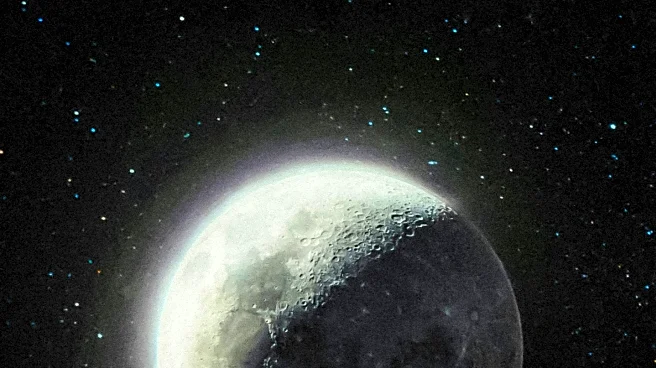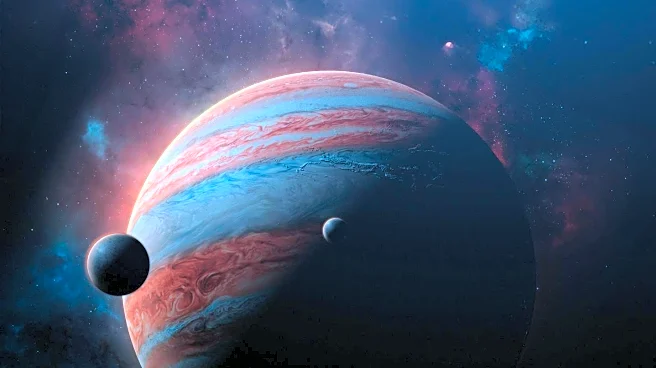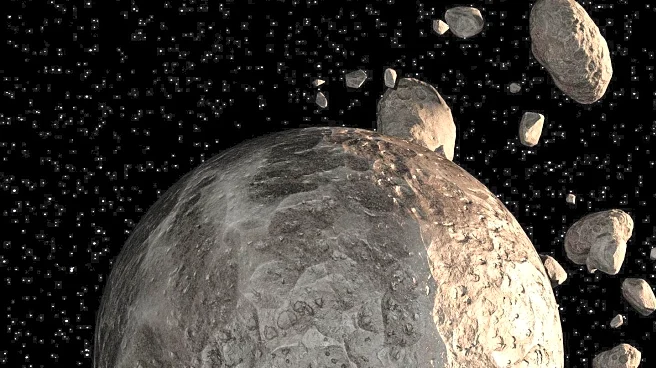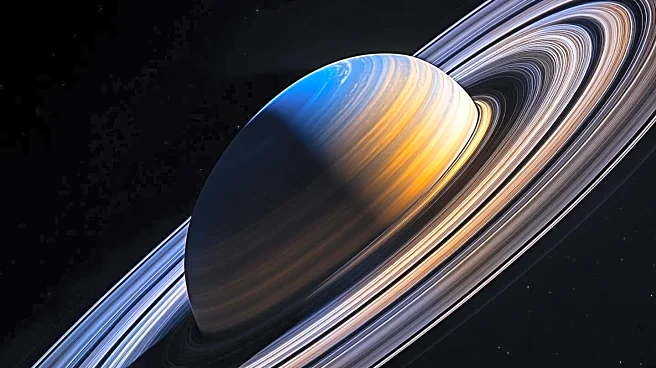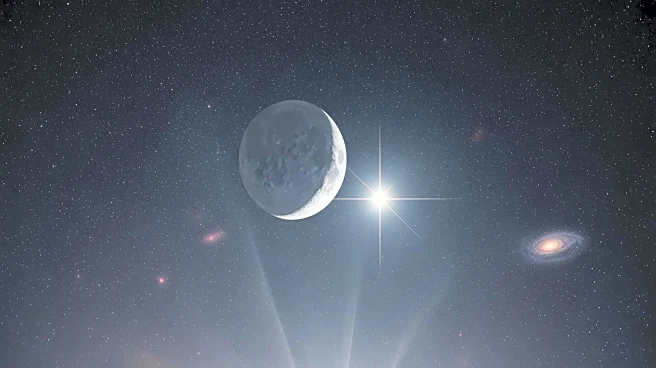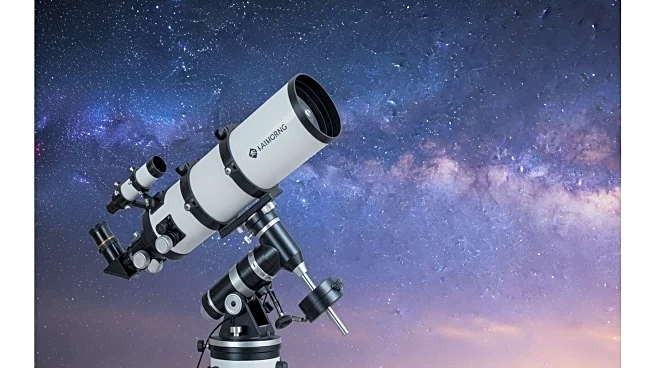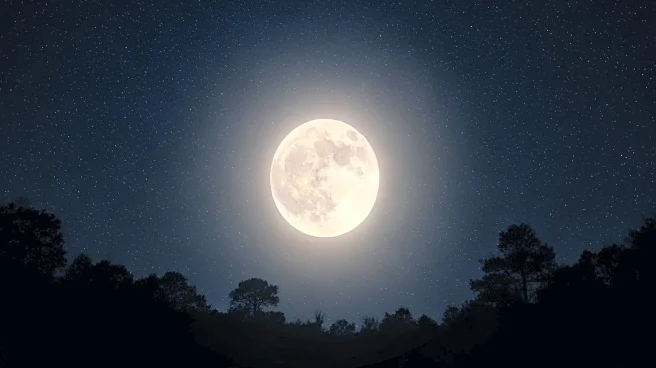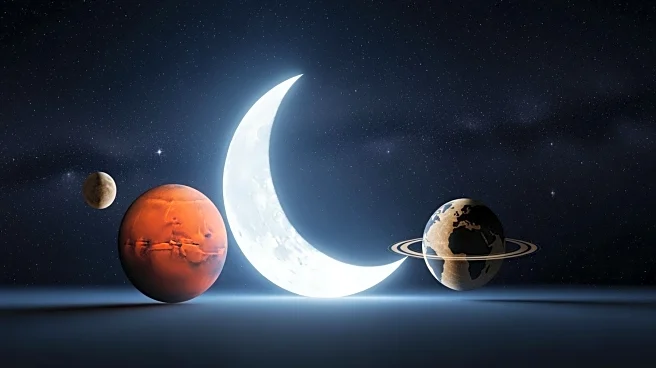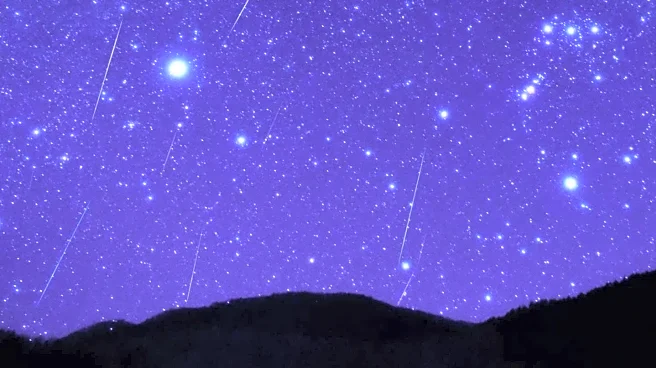What's Happening?
On October 24, the Moon will pass close to the red giant star Antares in the constellation Scorpius, offering a spectacular view for stargazers. This celestial event will be visible shortly after sunset,
with the Moon appearing near Antares, which marks the heart of the Scorpion. Observers can expect to see earthshine on the Moon, a phenomenon where sunlight reflects off Earth and illuminates the Moon's dark side. The event also coincides with the visibility of the Teapot asterism in Sagittarius, adding to the evening's astronomical sights.
Why It's Important?
This alignment provides a unique opportunity for amateur astronomers and enthusiasts to observe the interaction between celestial bodies. Such events can spark interest in astronomy and encourage educational activities related to space observation. The visibility of earthshine and other celestial features can enhance understanding of lunar phases and the dynamics of the solar system. This event is particularly significant for those interested in the study of stars and constellations, as it highlights the position and brightness of Antares.
What's Next?
Following this event, observers on the U.S. West Coast will have the chance to witness a dual shadow transit on Jupiter's cloud tops involving its moons Io and Europa. This will occur on October 25, providing another exciting opportunity for telescope users to observe planetary phenomena. Such events continue to offer educational and observational opportunities for astronomy enthusiasts.
